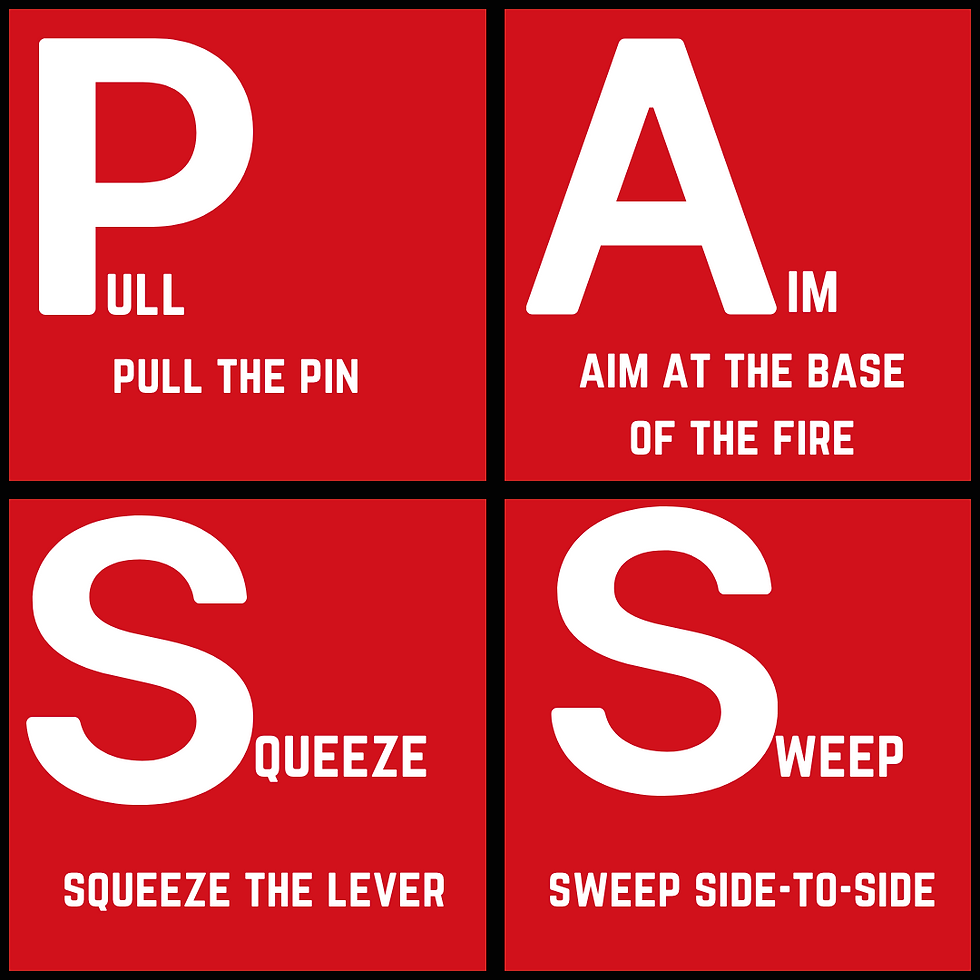Prepare in a Year - Fire Safety Basics
- admin774715
- Oct 15, 2022
- 4 min read
Home fires can occur anytime. The fall and winter months see an increase of home fires. Fires in homes are most often caused by cooking accidents, smoking indoors, fireworks or unsafe use of woodstoves or space heaters. Smoke detectors and carbon monoxide detectors should be tested once a month and the batteries should be replaced every six months. Detectors should be replaced every 10 years. If the fire is too big for you to handle, immediately get out of the house. Don’t stop to gather anything or to do anything. Call 911 from outside! Once outside, stay outside.

Smoke Detectors
Smoke detectors are an important tool in keeping your family safe from home fires. These give you an early warning that there may be a fire in your home. Home fires can spread very quickly, so minutes or even seconds can be the difference between safe egress and disaster.
•Install smoke detectors in every room in the house. Install them on ceilings only, as hot smoke rises, and they can collect dust and malfunction if mounted on a wall.
•Test the smoke detector every 6 months, timing the test with the two times a year you adjust clocks makes it easy to remember. Some smoke detectors batteries last 10 years, others should be changed every 6 months, learn what your smoke detector requires.
•Carbon monoxide detectors should be installed low on walls as carbon monoxide sinks. Test every 6 months and know battery schedules.
•Never use or store gasoline, kerosene or similar flammable liquids inside your home. (Store them in approved containers in well-ventilated storage areas).
•Discard all rags and materials that have been soaked in flammable liquids (place them outdoors in a metal container).

Matches and Smoking
• Store matches and lighters up high, away from children
and if possible in a locked cabinet.
• Never smoke in bed or when drowsy or medicated.
• Douse cigarette and cigar butts with water before disposal
in an outdoor container.

Heating Sources
• Use alternative heat sources, such as woodstoves or
space heaters, according to the manufacturer’s instructions.
• Never use gas ovens, stoves, barbeques or propane heaters for indoor heating.
• Place heaters at least 3 feet away from flammable material.

Electrical Wiring
• Inspect extension cords for frayed or exposed wires and loose plugs.
• Make sure outlets have cover plates and that no wires are exposed.
• Do not overload extension cords or outlets.

Practicing fire safety
•Choose a safe place outside your home to reunite with your family.
•Regularly remind all household members of the location.
•Draw the floor plan of your home and discuss two ways to exit each room.
•Hold a fire drill at least twice each year.

Exiting Buildings
• If there is a fire or when the smoke detectors or carbon monoxide detectors sounds, leave immediately!
• Do not try to fight the fire. Once outside, do not re-enter the home for any reason!
• Call 911 from a cell phone once outside, or from a neighbor’s house.
• Know the location of all exits including the windows. (If you live in an apartment, count the number of doorways between your apartment and the two nearest exits. This will help you leave safely in the dark).
• If the nearest exit is blocked by fire, heat or smoke go to another exit.
• If you must escape through a closed door, check for heat before opening it. Use the back of your hand to feel the top of the door, the doorknob, and the crack between the door and door frame before you open it. If it is hot, do not open it and escape through a window.
• If your clothes catch fire, “STOP, DROP and ROLL” until the fire is out.
• If caught in smoke: drop to your hands and knees and crawl, breathe shallowly through your nose and use your shirt or jacket as a filter.
• If you are in a room and cannot escape, leave the door closed, stay low to the floor and hang a white or light-colored sheet outside the window to alert firefighters of your presence.
• Always use an exit stairway, not an elevator. (Elevator shafts may fill with smoke or the power may fail, leaving you trapped).
• Stairway fire doors will keep out fire and smoke - if they are closed - they will protect you until you get outside.
• Close as many doors as possible as you leave. (This helps to confine the fire and gives you time to escape).

Fire Extinguishers
• Install ABC-rated fire extinguishers in your home and teach family members how to use them using the PASS method (see graphic below).
• Have one extinguisher per floor in your home as well as one in the kitchen and one in the garage. • Place the extinguisher away from the stove and near the door of the kitchen for easy access. The same for the garage.
• Even though the extinguisher may not match décor, do not place the extinguisher in a closet or behind drapes or curtains.

For more information, visit: https://mil.wa.gov/personal






Comments